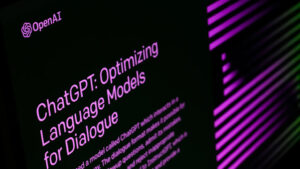Technology
Is the rapid ascent of AI starting to taper off
Published November 20, 2024 6:20 AM GMT+7

A growing belief in Silicon Valley could have profound implications: progress in large AI models—those anticipated to bring about human-level artificial intelligence—may be slowing down.
Since ChatGPT’s groundbreaking launch two years ago, many in the tech world have argued that advancements in generative AI would accelerate exponentially as companies poured more data and computing power into these models. The prevailing assumption was that achieving artificial general intelligence (AGI)—machines capable of matching or surpassing human intelligence—was a matter of scaling resources.
Such rapid advancements even prompted calls for a pause in AI development, including from figures like Elon Musk. However, major tech companies, including Musk’s own ventures, have continued to invest heavily, spending billions to remain competitive. OpenAI recently secured $6.6 billion in funding, while Musk’s AI firm, xAI, is reportedly raising $6 billion to acquire tens of thousands of Nvidia chips essential for training large models.
Yet, cracks in this strategy are starting to show. Industry experts are recognizing that large language models (LLMs) are no longer achieving exponential performance gains simply by increasing scale. Despite massive investments, improvements appear to be leveling off.
“The sky-high valuations of companies like OpenAI are based on the assumption that scaling LLMs will lead to AGI,” said Gary Marcus, a noted AI expert and critic. “That’s a fantasy I’ve always warned against.”
Finite Limits
One challenge is the limited availability of language data for training. Scott Stevenson, CEO of AI legal tech firm Spellbook, notes that relying solely on language data for scaling was always bound to hit a ceiling. “Some labs were too focused on just adding more language, thinking it would automatically make the models smarter,” he said.
Sasha Luccioni, an AI researcher at Hugging Face, similarly argues that the industry’s “bigger is better” approach was unsustainable. “The pursuit of AGI was always unrealistic, and this plateau was inevitable,” she explained.
While some in the AI industry push back on these claims, calling progress unpredictable, there are clear signs of a strategic shift. OpenAI has delayed releasing its next model beyond GPT-4, reportedly due to underwhelming improvements. Instead, the company is now focused on refining its existing tools, emphasizing better reasoning over brute-force scaling.
This new approach is exemplified by OpenAI’s “o1” model, which aims to deliver more accurate responses by enhancing its ability to reason. Stevenson likens the shift to teaching AI to “spend more time thinking rather than reacting,” a change that has already led to significant improvements.
Refining the Breakthrough
Some experts see this moment as an opportunity to optimize AI rather than chase unattainable goals. Walter De Brouwer, a Stanford professor, compares LLMs to students transitioning from high school to university: “AI’s early stages were like a chatbot improvising and making mistakes. Now, we’re entering a phase where thinking before acting—like humans—is becoming the focus.”
Rather than fueling the fire endlessly with data and processing power, the next phase of AI development may be about channeling its potential into specific, practical applications. As the industry recalibrates, it’s clear that the path to AGI may not be as straightforward as once believed.
Technology
Latest
Advertise With Us
BVD Newsletters
Sign up for free newsletters and get more BVD delivered to your inbox
Get this delivered to your inbox, and more info about our products and services.
© 2024 BVD LLC. All Rights Reserved.
Data is a real-time snapshot *Data is delayed at least 15 minutes. Global Business and Financial News, Stock Quotes, and Market Data and Analysis.
Market Data Terms of Use and Disclaimers
Data also provided by REFINITY











